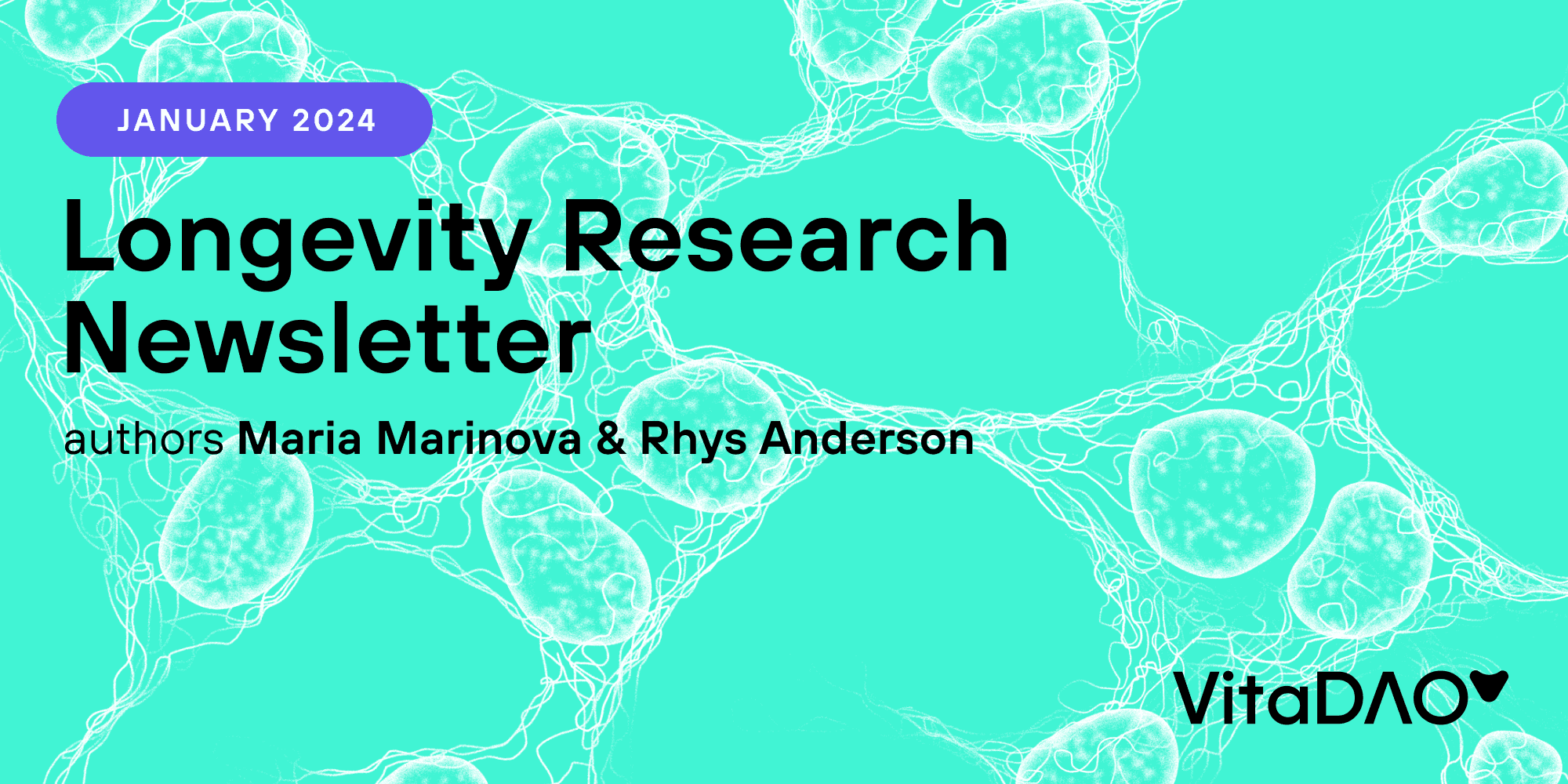
January Longevity Research Newsletter

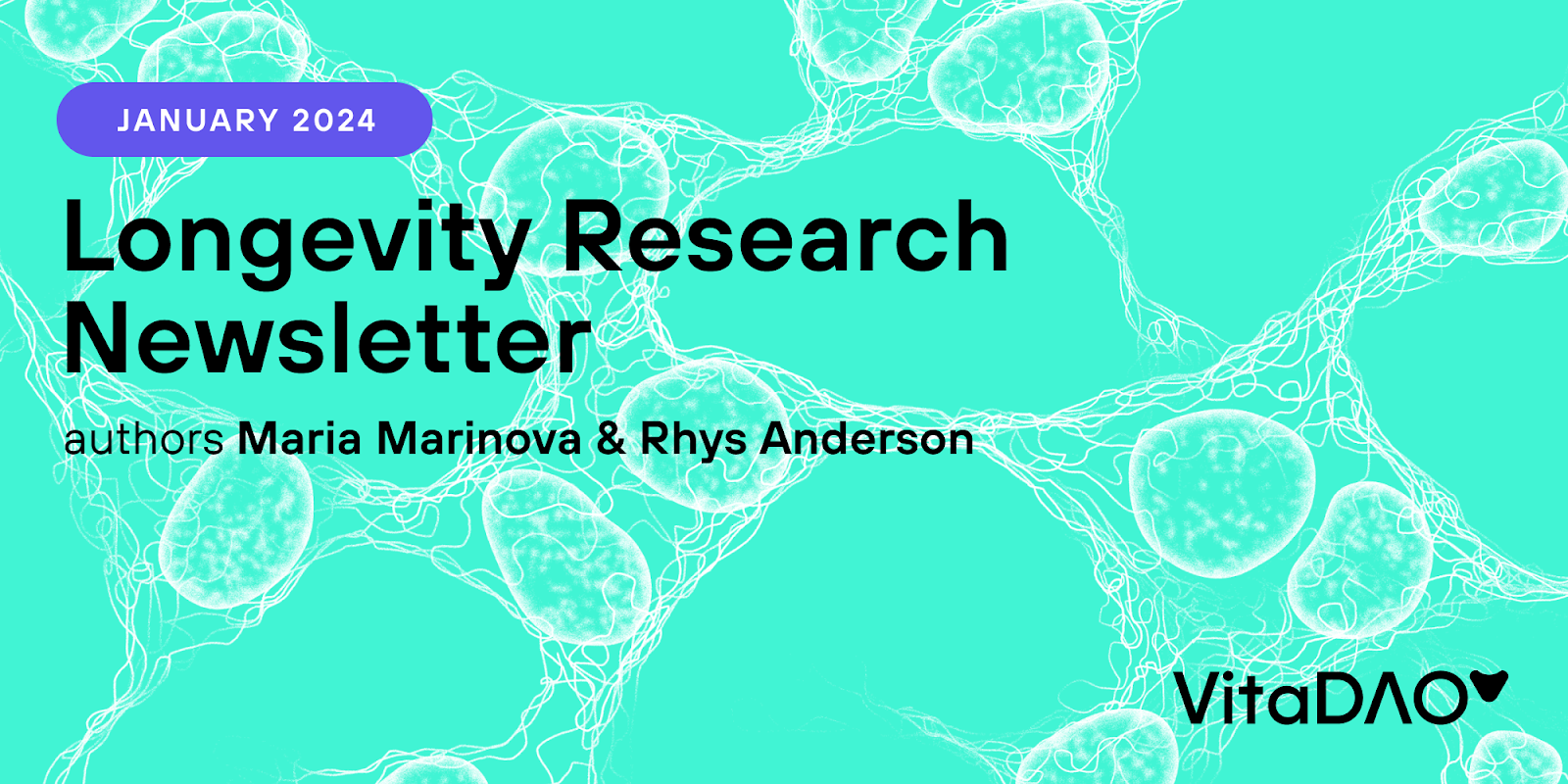
Introduction
Welcome back Vitalians. I’m sure that most of you would have by now heard the sad news that renowned Professor Judith Campisi has passed away. In place of our usual interview, this month we would like to dedicate an in memoriam to her followed by a few words from one of her protégés, Marco Demaria.

It used to be believed that human cells could proliferate indefinitely, until Leonard Hayflick performed some pioneering experiments in the early 1960s which showed this was not the case, and after a reproducible number of divisions, later coined the “Hayflick Limit” cells would permanently stop dividing. On one hand this was viewed as a tumour suppressor mechanism, although it also had implications for aging, in that tissues would not be able to replenish themselves.
In 1995, Prof. Campisi discovered a senescence marker - named senescence-associated beta galactosidase or SAβ-gal - that enabled scientists to detect senescent cells both in cell culture and in vivo. Almost 30 years and 8000 citations later, SAβ-gal still remains the most commonly used marker to detect senescent cells. Some notable examples of its use include the seminal papers showing that removal of senescent cells can extend lifespan in mice and the discovery that senescent cells play a role in growth and patterning during mammalian embryonic development.
Then, in the early 2000s, Judith Campisi made a remarkable discovery showing that senescent cells are associated with a unique secretory phenotype, coined the senescence-associated secretory phenotype or SASP. She then began to elucidate the significance of this, leading to numerous discoveries that the SASP could cause inflammation and even drive cancer. This caused an explosion in the senescence field, with her and others discovering that the SASP was also involved in immune clearance of senescent cells, could elicit damage in neighbouring cells, was required for optimal wound healing and more.
With ~500 papers and over 100 thousand citations one can’t begin to comprehend the significance of her research. Her discoveries transcended the senescence/cancer fields and added much needed credibility to the ageing field in general, by describing a detrimental, yet tangible phenotype which can be therapeutically targeted. There are now a large number of biotech companies working on “senomorphics” specifically aiming to attenuate the SASP in hope of extending human healthspan and lifespan.
Now we would like to share a few words from Marco Demaria.
“Judy was a passionate scientist, always looking forward and always digging in the unknown. She hated to do incremental research; her goal was to always find the new. She was highly creative but also extremely rigorous – you could not convince her very easily without showing many repeats of the same experiment. She kept repeating: 'The data are the data'.
Her laboratory was a family, and she tried to help everybody within and outside the laboratory. She was positive and collaborative also in the most difficult moments. All the people she met were impressed by her kindness and openness. She never said no to a glass of wine and a performance on the dance floor, reflecting her very social attitude and her italian blood.
She supported me from the first day I joined her lab, and she kept doing so after I left. She told me the importance of doing science the right way, not to care about impact factors. She taught me how you can be a confident leader, how you can manage many things with a smile on your face. She always found the right words to advise and encourage me through different parts of my career. I will miss all the endless conversations on science and life we had, listening to her stories and memories, and seeing her spontaneous interest for everything I told her.”
Finally, here is a podcast she recorded for the Buck Institute
Introducing: Monthly Longevity challenge
Focus on a topic every month starting with a quick and easy guide on exercise for longevity from Nina Patrick. We have also announced a competition for the community to share their attempt on the challenge and post proof or work(out) in our discord channel. The most active members will not only crush their goals but also be awarded a prize of 200 VITA
Longevity Literature Hot Picks

Preprint Corner in collaboration with

The Longevist is an overlay journal spotlighting the most promising longevity studies each quarter through a collaborative and transparent process, leveraging insights from a panel of global experts in the longevity space.
The Q4 2024 shortlist is now in the hands of the curators as they vote to determine they favourite preprints of the quarter! In the meantime, check out the 3rd issue of The Longevist and look out for our newly assigned ISSN!
Longevity-featured research (Q2 2023 shortlist) now published in Frontiers in Aging
Check out these latest preprints, each of these will be entered into the Q1 2024 longlist to be in the running to receive a coveted place in The Longevist. They are also available to review on our reviewing platform The Longevity Decentralized Review (TLDR) for a bounty of 50 VITA per review.
As always, you can refer preprints to The Longevist and receive a bounty of 50 VITA for each one that makes the editors' shortlist or 200 VITA if it makes the curators' top 3.
A universal molecular mechanism driving aging

CD4 T Cells Acquire Cytotoxic Properties to Modulate Cellular Senescence and Aging
Published Research Papers

The efficacy of chemotherapy is limited by intratumoral senescent cells expressing PD-L2
Chemotherapy triggers the upregulation of PD-L2 in cancer cells, aiding their evasion from the immune system and supporting tumor growth. Blocking PD-L2, in combination with chemotherapy, effectively clears senescent cancer cells, offering a potent anti-tumor strategy.
Titan mice as a model to test interventions that attenuate frailty and increase longevity
The Titan mouse, a short-lived species, presents a valuable model for aging research due to its brief lifespan and early signs of aging. Dietary changes and senolytic drug treatments, like Navitoclax, have shown promising results in extending lifespan and reducing signs of senescence in these mice.

OXR1 maintains the retromer to delay brain aging under dietary restriction
The mtd/OXR1 gene affects lifespan extension through dietary restriction by maintaining cellular trafficking processes. Its decline contributes to aging and neurodegeneration, but enhancing its function offers potential for treating age-related disorders and extending lifespan.
The study finds that mitochondrial dysfunction leads to T-cell aging and senescence, mediated by the cGAS-STING pathway. Increasing NAD+ levels with nicotinamide mononucleotide (NMN) can prevent this senescence and improve immune function and survival in mice.
An accurate aging clock developed from large-scale gut microbiome and human gene expression data
Utilizing a large dataset of 90,303 stool samples, the study developed a refined microbiome-aging model, revealing correlations between biological age and lifestyle or health factors—such as higher predicted ages in individuals on a paleo diet or with IBS, and lower in vegetarians.

Long term methionine restriction: Influence on gut microbiome and metabolic characteristics
The Methionine restriction (MR) diet improves metabolism in mice but has minimal long-term effects on the gut microbiome, with age being a more significant factor in microbial changes than diet. Early stages of MR diet showed specific microbial alterations, but aging predominantly influenced the microbiome composition over time.
Mathematical recapitulation of the end stages of human ovarian aging
Using mathematical models, this study accurately predicts individual variability and population-wide patterns in ovarian aging, specifically the timing of menopausal transition (MT) and age at natural menopause (ANM).

The immunity and redox clocks in mice, markers of lifespan
The Immunity and Redox Clocks, developed from immune and redox markers in mice, accurately estimate biological age, correlating with lifespan and the effects of lifestyle interventions. These models, validated with strong accuracy, offer a tool for quantifying aging and assessing interventions' impacts on longevity.
Mucosal TLR5 activation controls healthspan and longevity
Stimulating TLR5 with a flagellin fusion protein improves lifespan and health in mice, showing benefits like reduced aging signs, enhanced cognitive and stem cell functions, and better bone and lung health. It also strengthens intestinal integrity, highlighting TLR5 stimulation as a promising strategy for healthy aging.
Iatrogenic Alzheimer’s disease in recipients of cadaveric pituitary-derived growth hormone
The study suggests Alzheimer's disease (AD) can be linked to early exposure to growth hormone treatments contaminated with amyloid-beta (Aβ), indicating AD may have iatrogenic forms transmitted through medical intervention, similar to Creutzfeldt-Jakob disease.

Published Literature Reviews, Hypothesis, Perspectives and more
Hand grip strength as a proposed new vital sign of health: a narrative review of evidences
Hand grip strength (HGS) is a crucial measure of muscle function, particularly in the aging population. This review highlights its relevance to health, showing that HGS can reliably assess muscle strength. Low HGS is associated with various diseases and health issues, making it a valuable biomarker and potential vital sign throughout life.
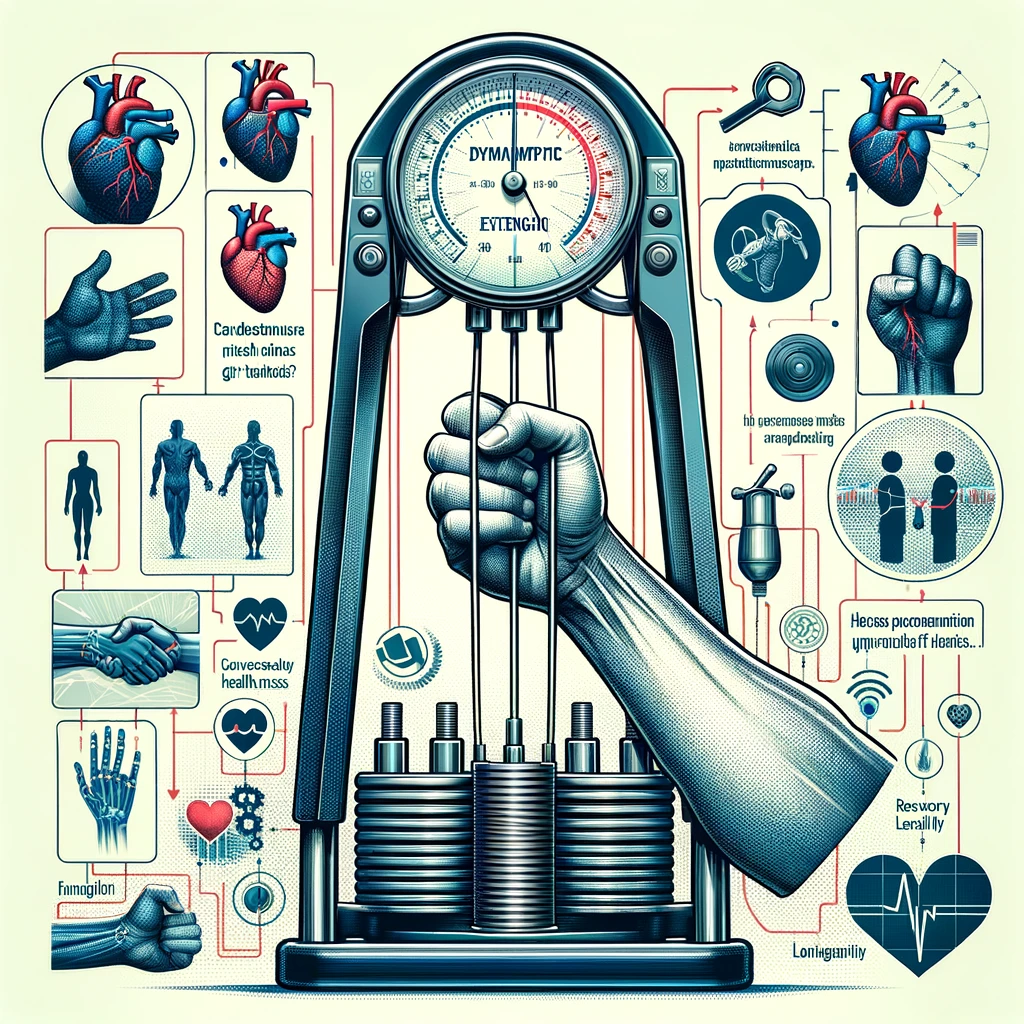
Sleep disorders and Alzheimer’s disease pathophysiology: The role of the Glymphatic System. A scoping review
This review investigates the link between Alzheimer's disease (AD) and sleep disturbances, focusing on their impact on the glymphatic system. It includes 70 research articles and categorizes findings related to protein aggregation, glymphatic markers, circadian dysregulation, and potential interventions.
Genome Instability and DNA Repair in Somatic and Reproductive Aging
DNA repair is essential for genetic maintenance, differing between somatic and germ cells. DNA damage contributes to aging and diseases like cancer. Germ cells' stringent DNA repair mechanisms can inform strategies for improving somatic DNA repair and maintaining health during aging.
Seven knowledge gaps in modern biogerontology
The editorial summarizes the responses from the Biogerontology editorial board regarding crucial unanswered questions in aging research. Seven knowledge gaps are categorized into evolutionary aspects, survival and death mechanisms, and aging heterogeneity.
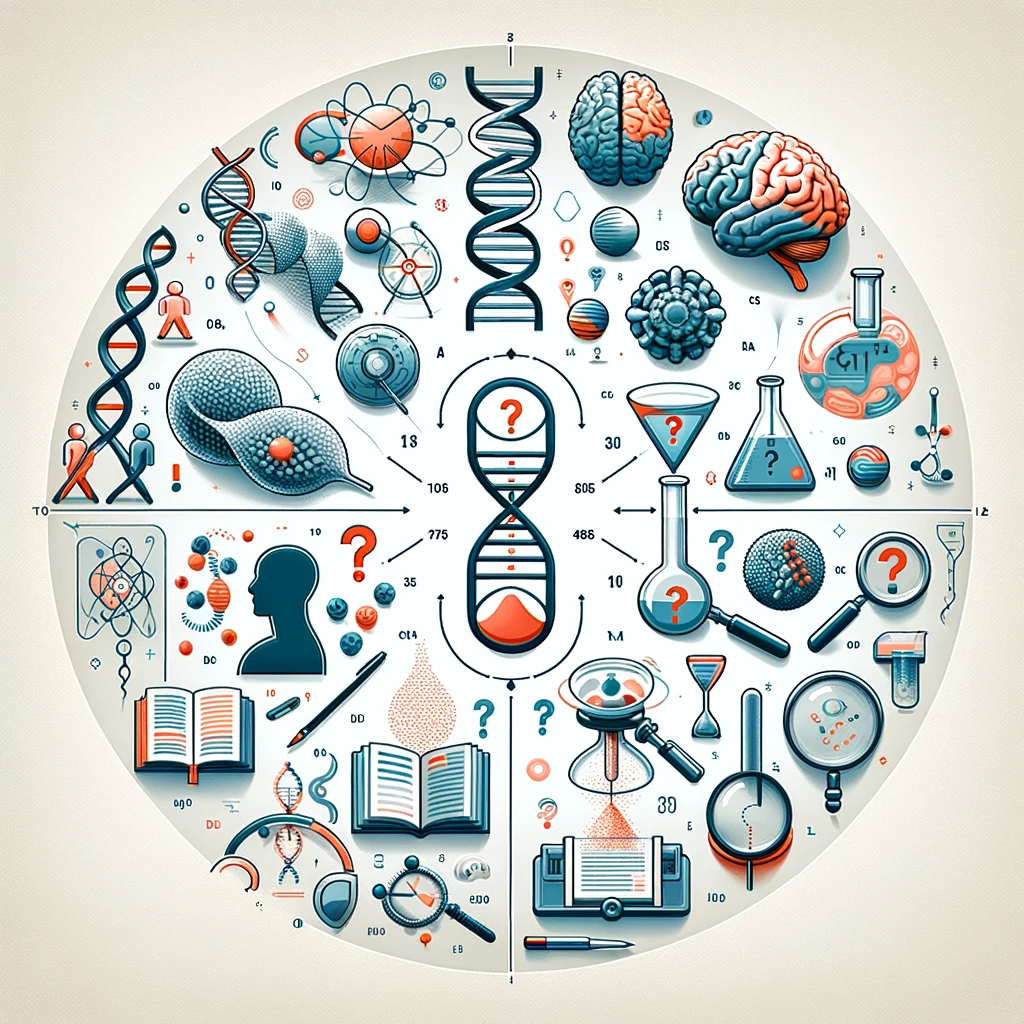
Intrinsic capacity, a combination of physical and mental abilities, is vital for functional ability. Its decline, often linked to aging, is affected by chronic inflammation. This review examines the connection between chronic inflammation, inflammation-related markers, and intrinsic capacity.
A surge in funding has transformed aging research, making it a mature and dynamic field with promising results. Researchers now have the resources to delve deeper into the mechanisms of aging using tools like 'omics approaches and larger study sizes. While several hallmarks of aging have been identified, researchers acknowledge that aging is a complex process with multiple contributing mechanisms.

Distinguishing between driver and passenger mechanisms of aging
Identifying which changes drive aging is difficult, and empirical approaches using animal models and human genetics have been employed. Overall, our understanding of the drivers of human aging is incomplete, but uncovering them has the potential to revolutionize biomedical research, especially in the context of a growing global aging population.
Nurturing longevity through natural compounds: Where do we stand, and where do we go?
The past decade has advanced aging research, revealing new hallmarks of aging and potential longevity interventions. Plant-derived compounds are also under investigation. Recent developments, approaches targeting aging hallmarks, and the potential of plant-based compounds in promoting longevity are discussed.

Job Board

Dr Ferriera’s lab at The University of Edinburgh is seeking an independent and motivated Senior Research Technician to be part of an interdisciplinary team studying ageing and regeneration.
Head of a research group wanted for Genome Maintenance Mechanisms in the Department of Radiation Biology in Cologne, Germany.
Computational Life Science Research Professional at the Wyss-Corey Lab at Stanford University.
LongeVC is looking for a senior associate.
Buck Institute for Research on Aging is looking for a Postdoctoral Researcher to join the Gerencser lab.
Join the Kapahi Lab as a Research Associate.
The Kapahi Lab is looking for a dynamic and driven individual to join their team as a Research Associate at the Buck.
Bill Keyes is looking to recruit a PhD student studying senescence through their international call.
Marketing Manager at Loyal. Their mission is to bring the first FDA approved aging drugs to the market, and have already achieved ground-breaking milestones on our path to gaining FDA approval for the first lifespan extension drug for any species.
Postdoc position available in Björn Schumacher’s lab, Institute for Genome Stability in Ageing and Disease. CECAD-Cluster of Excellence in Aging Research, University of Cologne. investigating the fundamental role of DNA damage in aging and how inheritance of stable genomes is regulated.
The Chellappa lab is hiring a Postdoctoral Research Associate in Aging, Metabolism and Host-microbiome interactions at Brown University Department of Molecular Microbiology and Immunology.The project will focus on studying the host and microbial metabolism using systems biology approach.
Ora Biomedical, Inc. is a longevity biotechnology company dedicated to revolutionizing healthy lifespan by targeting aging. They are recruiting a Research Scientist in Seattle.
News and Media

The Future of Longevity: The Battle Against Human Aging (NFX Original)
Short Documentary
What is behind ageing’s causal wheel?
Cells Across the Body Talk to Each Other About Aging
The Meme King of Longevity Now Wants to Sell You Olive Oil

Scientists can tell how fast you're aging. Now, the trick is to slow it down
Life span increases in mice when specific brain cells are activated
Growing old while staying young: The unique mechanisms that defy aging in plants
It's not your life span you need to worry about. It's your health span
The Biomarkers of aging consortium has launched a newsletter - sign up here!

Dr. Brad Stanfield’s rapamycin and exercise study has now been fully funded, with help from various donors, including VItaDAO with a 50k USD contribution.
Obesity drugs have another superpower: taming inflammation
CAR T Therapy Lowers Senescence, Improves Health in Mice
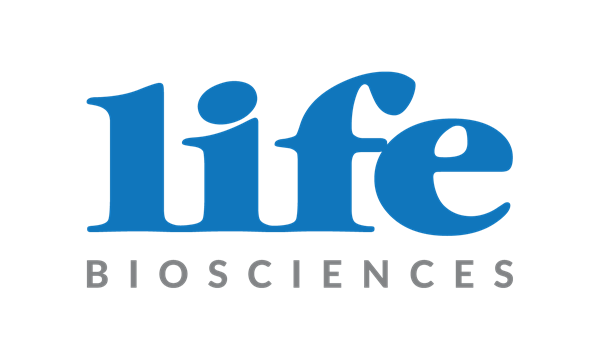
Resources

Biolearn, an open-source biomarker validation library and platform enabling easy and versatile analyses of biomarkers of aging data.
Biolearn is a tool that simplifies the analysis of biomarkers of aging data. It allows users to easily import data from publicly available sources like the Gene Expression Omnibus, National Health and Nutrition Examination Survey, and the Framingham Heart Study. Biolearn also includes reference implementations for common aging clocks such as the Horvath clock and DunedinPACE, which can be run with just a few lines of code.
Join Biolearn Discord.
New Book review: How We Age: The Science of Longevity Coleen T. Murphy
LONGEVITY TV SERIES AIMS TO SHED LIGHT ON THE FUTURE OF LIVING LONGER AND HEALTHIER LIVES
Human Ageing Genomic Resources: updates on key databases in ageing research
Prizes

Longevity Prize Million Molecule challenge with Ora Biomedical
Propose interventions to extend C. elegans lifespan, with a chance to win a prize for the most effective approach. Ora Biomedical has developed the WormBot-AI platform, combining robotics and AI to study longevity in C. elegans, a model organism for aging research. This technology enables quantitative assessment of lifespan and healthspan on a large scale, advancing our understanding of longevity.
Biomarker Challenge, our open-science competition rewarding folks who can best predict chronological age, survival/mortality and multi-morbidity incidence using biomarker data. Challenge officially begins March 1st.
Developing and validating aging biomarkers for clinical trials is challenging due to data limitations and collaboration barriers between scientists. To address this, Biolearn, an open-source toolset, was created. It harmonizes omics datasets and calculates existing aging biomarkers. See more about Biolearn in Resources section.
Conferences

How should ageing be classified?
Impetus awardee and Longevist curator Barry Bentley announces he will be hosting a consensus meeting with experts from around the world to define the criteria for an ageing-related pathology.
Date: Monday, 19th February, 2024
Contact Emma Short: eshort@cardiffmet.ac.uk
Date: Thursday, March 7, 2024
Location: Conrad T. Prebys Auditorium, Salk Institute, La Jolla
Registration deadline: Monday, February 26, 202
Tweets of the Month

Karl Pfleger
https://twitter.com/KarlPfleger/status/1736108328743489903
The aging field doesn't discuss enough the key top-level distinction between the 2 main therapeutic paradigms: slow aging or reverse it. I support slowing aging as much better than traditional medicine, but it pains me to see many in the field disparage or ignore reversal & I think there should be more open discussion of this distinction………
Anar Isman
https://twitter.com/IsmanAnar/status/1750383400664621057
Aging is the ultimate waste – a waste of talent, wisdom, genius. Takes decades to master a craft, only to have limited time to apply it. Think of the possibilities if mastery wasn't cut short: Federer dominating courts for 20 more years, Einstein revolutionizing science for another two decades, Aretha Franklin enchanting us with her voice, [insert your favorite luminary] advancing a cause dear to you. Let's challenge aging and unleash our full potential.
Podcasts and Webinars

A great list of Aging Podcasts
NUS Medicine’s Healthy Longevity Webinar Series
Unlocking the Secrets of Aging with Prof. Pankaj Kapahi - BCI Podcast
Unlocking the Secrets of Lifespan Extension With Karl Pfleger
Aubrey de Grey: Lifespan Extension Imminent Breakthroughs & AI's Impact | Intelligence Podcast #001
The Sheekey Science Show - Should we be measuring biological age? - Aaron King
The Optispan podcast covering a variety of topics related to longevity and healthspan
Outro
We appreciate you sticking with our research newsletter for another month and hope the content we curate is useful in helping you to keep up-to-date with all the exciting longevity-related developments.
This time we leave you with the latest VitaDAO podcast Mitochondria and Aging with Prof. Rudolf Wiesner - VitaDAO Aging Science Podcast.
And don’t forget to check our Member’s Portal. New services are added every month!
See you next month!
Further Reading
Epigenetic Reprogramming as a Key to Reverse Ageing and Increase Longevity
Implications of stress-induced gene expression for hematopoietic stem cell aging studies
Causality-enriched epigenetic age uncouples damage and adaptation
Mitochondrial-derived vesicles in metabolism, disease, and aging
Omega-3 supplementation and outcomes of heart failure: A systematic review of clinical trials
Lipid droplets, autophagy, and ageing: A cell-specific tale
Targeting ageing with rapamycin and its derivatives in humans: a systematic review
The interaction between ageing and Alzheimer's disease: insights from the hallmarks of ageing
Anti-Aging Drugs and the Related Signal Pathways
Cellular senescence in brain aging and neurodegeneration